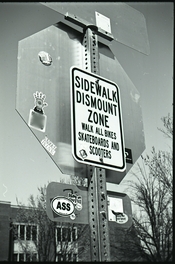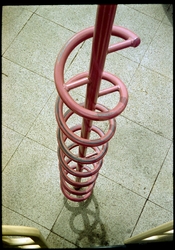This, plus the fact that no one had said a word about 126 and 110 not being home processing friendly (both were difficult, compared to 35 mm, to get out of the cartridge and impractical to reload -- even though Minolta, Mamiya, and several other 16 mm formats had reloadable cassettes before 126 was introduced, never mind Minox). Kodak never wanted consumers to reload their own film, though -- they sold 35 mm in bulk because it was a traditional consumer expectation going back to when it was the only way to feed your Barnack Leica (before Kodak made a preloaded 35 mm cassette that would work in both Leica and Contax cameras) -- not because they made better margin on that channel. So paper-backed roll film was pushed over 35 mm cassettes, even when the image area was about the same (828) and it wasn't any easier to load (828 again -- the size of the spools and backing makes 828 more difficult to load than even 1930s vintage 35 mm cameras with hinged backs) -- and then one-use cartridge films (126 and 110).
Film in general got a lot better through the 1980s and 1990s -- Kodacolor II was ahead of any C-22 even in 1972, and Kodak just kept improving the emulsions right up until the digital crisis almost killed them. But 110 cameras were basically gone by 1985, except for simple fixed-everything "toy" cameras, because 35 mm drop-in loading had matured, giving 4x the image area, lower cost per frame, and much wider choice of film speeds and emulsions. Once DX coding (and cameras that could read it) came along, the two-speeds limitation of even the better 110 cameras put the nails in the coffin of the format.
Even if you compare machine-made 4x6 prints, you can likely make a case that any film made after 1990 is better than anything you could buy in 1980.
Lomography Tiger *is* Kodak film (the 200 speed consumer stock, Gold?) cut and confectioned by/for Lomography. If it's inferior to 20+ year old Fuji, it's likely because by 2000 Fuji consumer films were, in general, better than Kodak consumer films (IMO) and Kodak has made few improvements in consumer films since they started shutting down lines around 2005.
























